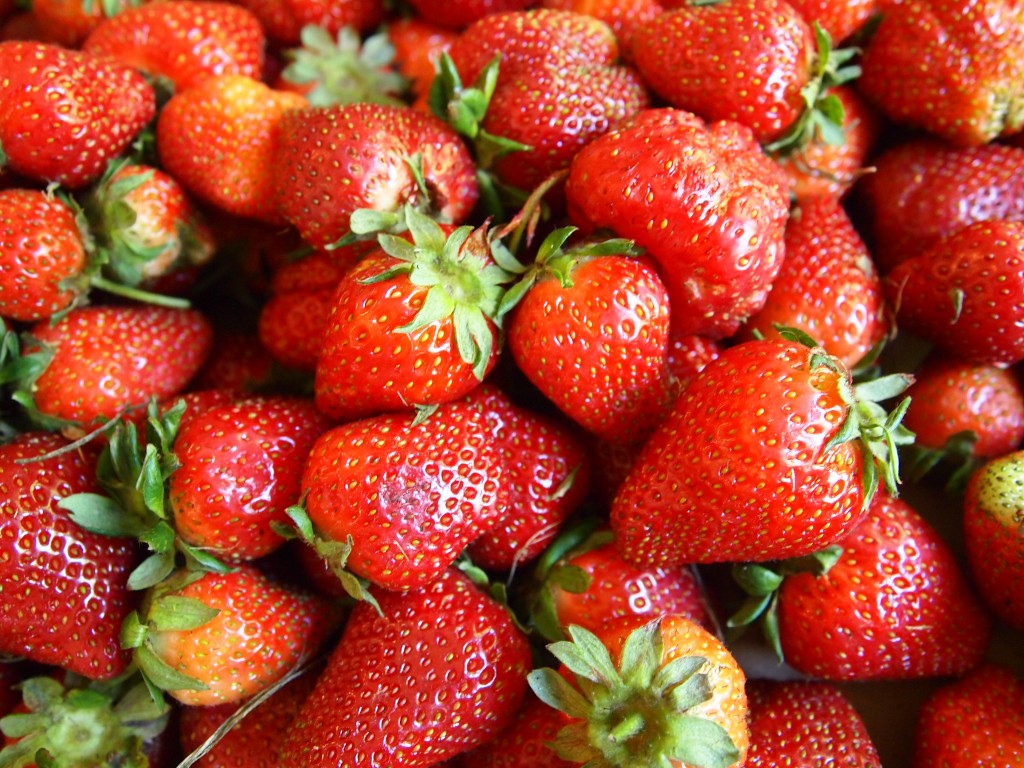
Understanding Sugar: Added vs.Natural
Photo Credit: Paul, via Flickr Creative Commons
These days everyone’s talking about sugar’s impact on our health. The bulk of the research that links the overconsumption of sugar with chronic disease such as diabetes, heart disease, cancer, and liver disease, primarily focuses on added and refined sugars as opposed to naturally occurring sugars that are found in whole foods such as fruit. The key is to understand the difference, as well as limit the quantity of sugar that you consume.
Added and refined sugars have no nutritional value, but sugar itself is not harmful in limited quantities
Sugar Science is a good place to start in order to help you make informed decisions. A team of health scientists at UCSF in collaboration with scientists from UC Davis and Emory School of Medicine launched this initiative based on leading-edge research on the effects of added sugars on our health. The researchers reviewed more than 8,000 published scientific papers in order to showcase key findings. For example, the site notes that that drinking just one can of soda per day can increase a person’s risk of dying from heart disease by nearly one-third, and can raise the risk of getting Type 2 diabetes by one-quarter. Their research also tells us that added sugar is hidden in 74% of packaged food.
Sugar has received a bad rap mainly because Americans tend to eat too much of it. Even though added and refined sugars have no nutritional value, it’s important to understand that sugar itself is not harmful in limited quantities. This is especially true when naturally occurring sugars are a part of a healthy, balanced diet. When you eat a piece of fruit or dessert such as an Ornish Kitchen Raspberry Thumbprint Cookie, you are also getting important nutrients and health-promoting phytochemicals along with a good source of fiber. The fiber slows down digestion and allows the sugar to release more slowly into your bloodstream, which in turn provides you with a sustained source of energy instead of the big spike that comes from refined foods with added sugars.
This video “Is Sugar in Fruit Different than Sugar in Soda?” shows the difference between consuming sugar from fruit versus added sugar in refined foods and beverages such as soda. It notes that epidemiological studies show that people who eat fruit are the healthiest. A study published in 2014 in the Journal of Epidemiology & Community Health showed those who ate seven or more servings of fruit or vegetables a day had a 25 % reduced risk of death by cancer and a 31 % reduction of death by heart disease and overall 42% lower risk of overall death.
The American Heart Association recommends limiting the amount of added sugars you consume to no more than half of your daily discretionary “extra” calorie allowance. This is the amount of calories that are left over after you have met all your basic nutritional needs for the day. For most American women, this is no more than 100 calories per day and no more than 150 calories per day for men. This is the equivalent to about 6-7 teaspoons (25 grams) per day for women and 9 teaspoons (36 grams) per day for men. The World Health Organization’s (WHO) suggests consuming less than 10% of one’s calories from added sugars. Less than 5% per day offers an increased benefit.
Understanding the Difference
It can be difficult to distinguish the difference between naturally occurring and added sugars in packaged foods. Currently the sugar listed on a label does not identify what is an added sugar such as table sugar or honey versus what is naturally occurring such as the sugar in whole foods such as fruit, or even sugars from vegetables, dairy, and whole grains.
The new proposed label plans to show the amount of added sugars in each serving. This proposed change will support making informed choices about added sugars. Until this change is made, one way to determine if there are added sugars is to read the ingredients on the package.
Added and Natural Sugars Defined
Added Sugars
Added sugars are sugars that are added to food or beverages during processing or preparing food. Added sugars can include natural sugars such as white or brown sugar, honey, agave or other caloric sugars that are chemically manufactured such as high fructose corn syrup. This does not include naturally occurring sugars that are naturally present in food such as in fruit and milk.
The following are examples of added sugars:
- Brown sugar
- Cane juice or cane sugar
- Coconut sugar
- Corn sweetener
- Corn syrup
- Fruit juice concentrates
- High-fructose corn syrup
- Honey
- Invert sugar
- Malt sugar
- Molasses
- Raw sugar
- Sugar
- Syrup
- Turbinado sugar
- Sugar molecules ending in “ose” (dextrose, fructose, glucose, lactose, maltose, sucrose)
Natural Sugars
Naturally occurring sugars occur naturally in whole foods such as fruit, dairy, and even vegetables and grains. For example, if a carrot had a label it would show one carrot contains 3 grams of sugars. A label for an apple would show 19 grams of sugars from one medium apple. This type of natural sugars are an important part of a healthy balanced diet providing us with the energy our body and brain needs along with nutrients and fiber.
Our brain’s sole fuel source is glucose and our muscles also rely heavily on the sugars for energy. The Ornish Living article Not All Sweeteners are Created Equal explains how much sugar is recommended and the different types of higher quality sweeteners and sugars. As long as we understand the different nutritional values and limited the quantity of sugars that we consume, they all can be enjoyed as part of a healthy approach to eat.
How much added sugars are you eating? How often do you choose natural sugar over refined, added sugar?







